UniversityOfCambridge
Latest

Material with eagle-like grasp could lead to grippier robot hands
Most materials bulge out when you squeeze them, pushing the energy outside. But that's not always what you want -- wouldn't it sometimes be better for them to collapse and hold the energy inside? These exotic materials (known as auxetics) already exist on a basic level, but they tend to be so fragile that you can only use them once. A team of UK scientists may have a better way: they've designed auxetic materials that can repeatedly collapse and store energy many times without breaking or expending additional energy, grabbing on much like an eagle's talon.

Diamond 'guitar' strings could lead to quantum computer memory
Quantum computers need memory to perform tasks like their conventional counterparts, but it's hard to create that memory when it only takes nearby vibrating atoms to lose all their data. Scientists may have a clever solution, though: tune diamond like a guitar string. They've crafted a quantum memory system where micron-wide diamond crystal strings house impurities that are better suited to data-storing electrons. If you subject the diamond to a voltage, you can stretch it and boost the frequencies the electrons are sensitive to, much like you would tighten a guitar string to change its pitch. It'll be harder to disturb the data, in other words.
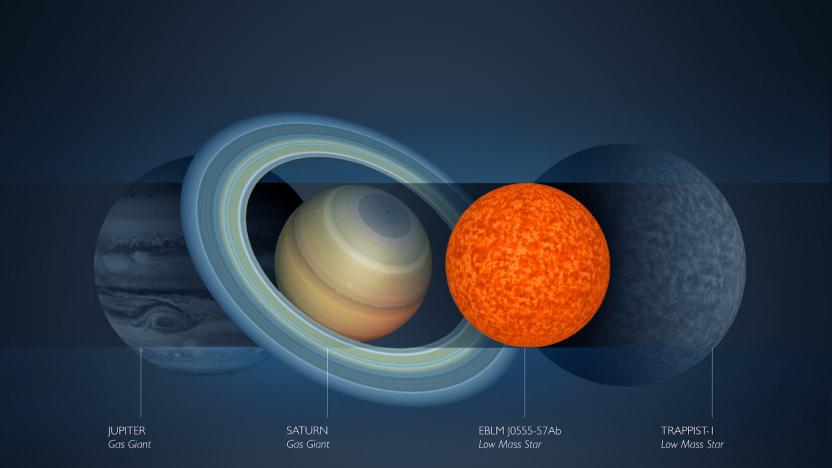
Astronomers spot the smallest star so far
Researchers at the University of Cambridge have found the smallest star ever discovered. It's just slightly bigger than Saturn and while its mass is similar to that of TRAPPIST-1 -- which NASA recently found seven Earth-sized planets rotating around -- its radius is 30 percent smaller.

Leaf veins may lead to longer battery life
There have been many, many discoveries that promise longer battery life, but one of the latest is rare in taking its inspiration from one of the most common structures in nature: the leaf vein. Scientists have crafted a porous material that mimics the highly optimized flow of nutrients in plant leaves. The team used an evaporation-based process to arrange zinc oxide nanoparticles into networks with pores of various sizes that behave like you'd expect in a leaf, maximizing the transfer of material while minimizing the necessary energy.
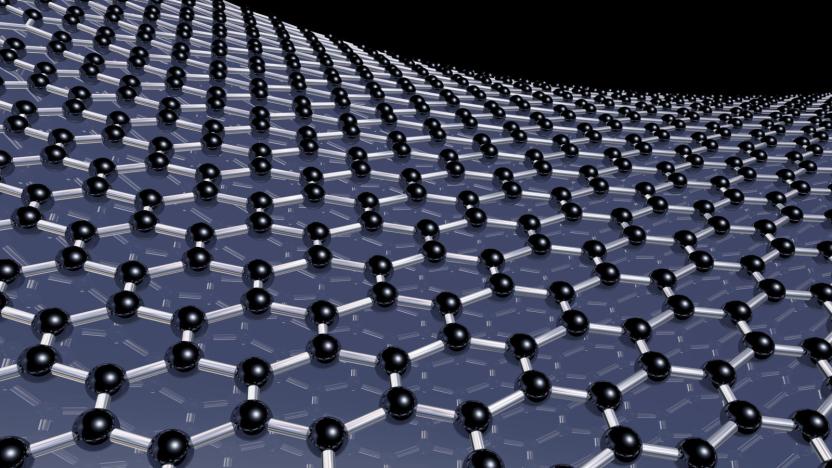
Researchers make a graphene superconductor
Graphene is the miracle cream of the physics world, with scientists all across the globe looking to unlock its powers. Researchers at the University of Cambridge believe they've found a way to transform the substance into a superconductor. Superconductors are nothing new, of course, but they normally have to be cooled to very low temperatures to be effective. In this experiment, however, the materials were left at the current temperature. Now, like so many graphene projects, it's still early days, but if it works, it could up-end the way we build electronics forever.
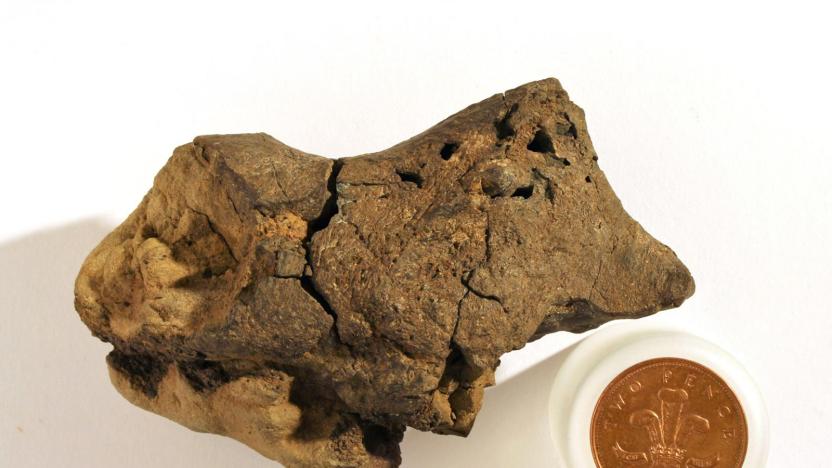
Scientists find the first known dinosaur brain tissue fossil
That lump you see above many not look like much at first blush, but it's a big deal for paleontology: scientists say they have discovered that the sample has the first known example of a dinosaur brain tissue fossil. The team used a scanning electron microscope to detect mineralized blood vessels, collagen, membranes and possibly brain cortex in the remains of an iguanodonid that lived about 133 million years ago. The findings suggest that the dino's brain had a lot in common with those of modern birds and reptiles. Instead of completely filling the cranial cavity, the brain matter significant space for blood vessels and sinuses.

Clever SIM sticker makes no-signal mobile payments possible
Mobile wallets aren't just for getting in and out of Starbucks that bit quicker. In several parts of the world, many people rely solely on mobile wallets for all their financial needs. These are particularly prevalent in Kenya, for example, where 58 percent of adults manage their money with mobiles. And we're not talking about smartphone apps and contactless payments here, but simpler systems like M-Pesa that work on feature phones and verify transactions via SMS messages. These are entirely reliant on the presence and performance of mobile networks, though, which a project called DigiTally is trying to address with a SIM sticker that lets users make and receive payments when there's no network connection whatsoever.

Two black holes are defying the limits of science
Even astrophysicists are occasionally surprised at what they find in the cosmos. University of Cambridge researchers have discovered that two black holes are consuming their companion stars at rates much faster than currently established limits would allow -- so fast, in fact, that the gas is ejecting at a quarter of the speed of light. To top things off, this is the first time that scientists have seen winds flowing away from ultra-luminous (and currently mysterious) X-ray sources.

Science: No, you can't be Spider-Man
We hate to crush your childhood dreams, but we have to be blunt: you're never going to be Spider-Man... not without some technical help, anyway. University of Cambridge researchers have determined that wall crawling isn't naturally feasible for any animal larger than a gecko, since you'd need inordinately large hands and feet to support yourself on the way up. If humans wanted to achieve these gravity-defying feats, they'd need sticky pads across 40 percent of their body surfaces -- try making that superhero movie, Sony.

Frozen oil could be the key to shapeshifting materials
Those odd, glowing shapes may look like they're straight out of a weird puzzle game, but don't laugh... they may be crucial to a future of ever-changing materials. British and Bulgarian scientists have discovered that oil droplets will form octagons, triangles and other not-so-natural shapes if you slowly freeze them while they're in a soapy solution. On top of that, they'll revert to their original states if you warm them back up. The results are more than a little odd, as you can see here -- they're non-living chemicals taking on artificial shapes in a lifelike way.
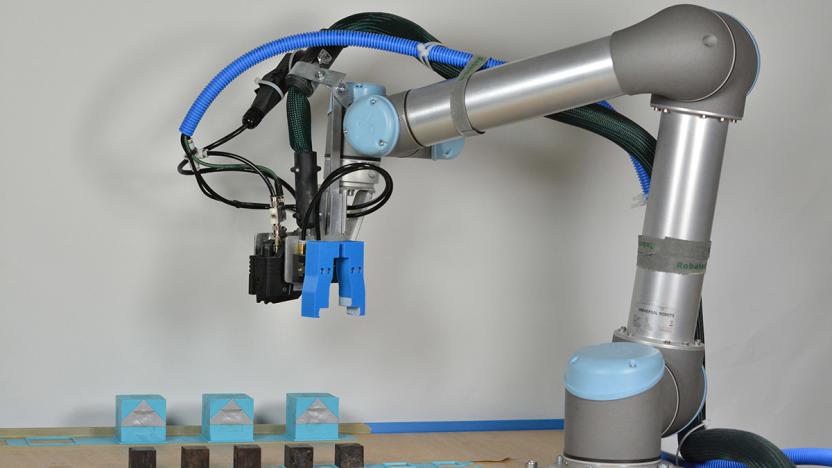
'Mommy robot' can build and test its own babies
A University of Cambridge team of researchers has created a "mother robot" capable of giving birth to -- or more correctly, building its own -- baby cube-bots. The team conducted five rounds of experiments, wherein it assembled 10 pint-sized machine children per generation with a motor and one to five plastic cubes. It then observed how fast they moved, as well as how far they got, all without human intervention. Momma bot left the fastest ones untouched, while "mutation and crossover were introduced" in the slower robo-kids for the next generation. By the time it got to the last batch, the small machines moved twice as fast as the fastest first-gen baby bots.
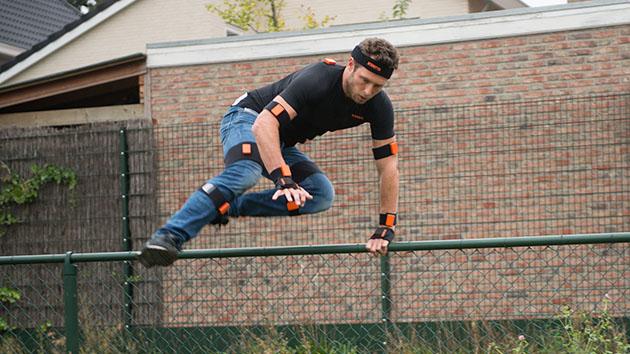
Motion capture suits can detect lies better by tracking your fidgeting
Stone-cold bad guys don't worry about lie detectors, because they can only suss out fibs 60 percent of the time -- not much better than someone without one. But there's a new hope for cops. Scientists at the University of Cambridge have used full-body motion capture suits to cajole the truth at a much better clip. They put 90 volunteers in $12,000 Xsens mocap suits, and had them lie to other volunteers. By tracking joint displacements, their algorithms could pick three out of four liars -- a much more useful result for law enforcement. One researcher said "put simply, guilty people fidget more... independent of cultural background, cognitive load and anxiety." The team thinks it can fine tune it for even better accuracy, so police may one day be squeezing perps into skin-tight suits rather than finger sensors.

Quantum data lock promises leak-proof security
Quantum cryptography is secure against intruders, since you can't intercept data in mid-flight without ruining it. The technology won't always stop leaks, however, which is why the University of Cambridge has developed a new protocol that keeps participants honest. The method combines the theories of both quantum physics and special relativity to preserve data in a locked state that isn't readable unless the sender provides a key; the laws of physics prevent anyone from decrypting the info beforehand. While we won't see any practical application of this quantum lock for a while, it could prove vital to financial traders and others who can't always trust their contacts.

EDSAC, the first 'practical' civilian computer, turns 64
On May 6th, 1949 EDSAC (or Electronic Delay Storage Automatic Calculator) ran its first programs, calculating a table of squares and generating a list of prime numbers. The massive vacuum-tube-powered machine was put into service at the University of Cambridge and almost immediately changed how research was done at the school. It was among the first general-purpose computers capable of storing programs in rewritable memory, which took the form of mercury delay lines. Maurice Wilkes, the designer of the EDSAC, certainly earned his place in computing history, but David Wheeler's later contributions were equally important. Using the EDSAC he invented subroutines, an essential component of modern programming that allows developers to reuse bits of existing code to simplify the act of writing software. This milestone piece of machinery is little more than scraps at this point, but a team at the UK's National Museum of Computing is working to build a working replica. The hope is to have the computer up and running by May of 2015. For some more insight into how the EDSAC changed the face of computing, check out the video after the break. [Image credit: University of Cambridge]

University of Cambridge chip moves data in 3D through magnetic spin
Chips that have 3D elements to them are very much real. Moving data in 3D hasn't been truly viable until now, however, which makes an experimental chip from the University of Cambridge that much more special. By sandwiching a layer of ruthenium atoms between cobalt and platinum, researchers found that they can move data up and down an otherwise silicon-based design through spintronics; the magnetic field manipulation sends information across the ruthenium to its destination. The layering is precise enough to create a "staircase" that moves data one step at a time. There's no word on if and when the technique might be applied to real-world circuitry, but the advantages in density are almost self-evident: the university suggests higher-capacity storage, while processors could also be stacked vertically instead of consuming an ever larger 2D footprint. As long as the 3D chip technology escapes the lab, computing power could take a big step forward. Or rather, upward.

Phase change memory breakthrough could lead to gigahertz-plus data transfers, make SSDs seem pokey
Often considered the eventual successor to flash, phase change memory has had a tough time getting to the point where it would truly take over; when it takes longer to write data than conventional RAM, there's clearly a roadblock. The University of Cambridge has the potential cure through a constant-power trick that primes the needed hybrid of germanium, antimony and tellurium so that it crystalizes much faster, committing data to memory at an equally speedy rate. Sending a steady, weak electric field through the substance lets a write operation go through in just 500 picoseconds; that's 10 times faster than an earlier development without the antimony or continuous power. Researchers think it could lead to permanent storage that runs at refresh rates of a gigahertz or more. In other words, the kinds of responsiveness that would make solid-state drives break out in a sweat. Any practical use is still some distance off, although avid phase change memory producers like Micron are no doubt champing at the bit for any upgrade they can get.

Cambridge researchers translate graphene into printable circuitry material, bring basic 'Skynet' factory to you
Yes, graphene is amazing and possesses many useful / otherworldly properties. The ability to use graphene itself to print flexible, transparent thin-film transistors via an inkjet printer is just another one of them. Over at the University of Cambridge, researchers have discovered that it's possible to print standard CMOS transistors using a graphene component. Provided the graphene is chipped off a block of graphite using a chemical solvent and the larger (potentially print-head blocking) chips are removed, it can be turned into a polymer ink which can then run through a conventional inkjet printer. The potential result of this is flexible, transparent and wearable computer circuitry coming from ordinary printers as opposed to several multi-million-dollar machines in a factory, which has long been the historical standard. Besides, who wouldn't want to print their own circuitry on a PhotoSmart MFP rather than whatever report might be due the next day?

Cambridge researchers tout new location-based method to predict friends on social networks
Friend suggestions on social networks may already be a little too eerily accurate for some, but a team of researchers from Cambridge University now say they can do one better. They've devised a method that doesn't simply rely the usual friends-of-friends approach, but on where those people tend to hang out. According to researcher Salvatore Scellato, "it turns out that the properties of the places we interact can determine how likely we are to develop social ties," and that places like offices and gyms are better indications of potential friends than football stadiums or airports. That notion was borne out in their research (conducted over a period of four months using Gowalla), which found that "about 30 percent of all new social links appear among users that check-in to the same places." With the two prediction methods combined, the researchers say they're able to account for 66 percent of all new social ties. No word if they've moved onto predicting crimes next. [Image credit: Gowalla]

Device Analyzer Android study wants to track your every move, if you'll let it
And here we thought folks were concerned about protecting their personal data. As it turns out, however, a surprising chunk of Android users have volunteered to give a group of University of Cambridge researchers a look at exactly how they use their cellphones. By downloading the Device Analyzer app from the Android market, more than 1,000 participants have allowed the data collection program to harvest statistics in the background while they use their phones. Those statistics -- varying from when the power is switched on, to which apps are in use -- are then made available to users via the Device Analyzer website. Of course, this is Cambridge, a rather well respected institution of higher learning, and the researchers involved say the data collected is stripped of personal information "as best as possible," but we're not keen on anyone peeping our cell stats. If you're an Android exhibitionist, however, you can sign up for the study at the source link below.

Cambridge developing 'mind reading' computer interface with the countenance of Charles Babbage (video)
For years now, researchers have been exploring ways to create devices that understand the nonverbal cues that we take for granted in human-human interaction. One of the more interesting projects we've seen of late is led by Professor Peter Robinson at the Computer Laboratory at the University of Cambridge, who is working on what he calls "mind-reading machines," which can infer mental states of people from their body language. By analyzing faces, gestures, and tone of voice, it is hoped that machines could be made to be more helpful (hell, we'd settle for "less frustrating"). Peep the video after the break to see Robinson using a traditional (and annoying) satnav device, versus one that features both the Cambridge "mind-reading" interface and a humanoid head modeled on that of Charles Babbage. "The way that Charles and I can communicate," Robinson says, "shows us the future of how people will interact with machines." Next stop: uncanny valley!









